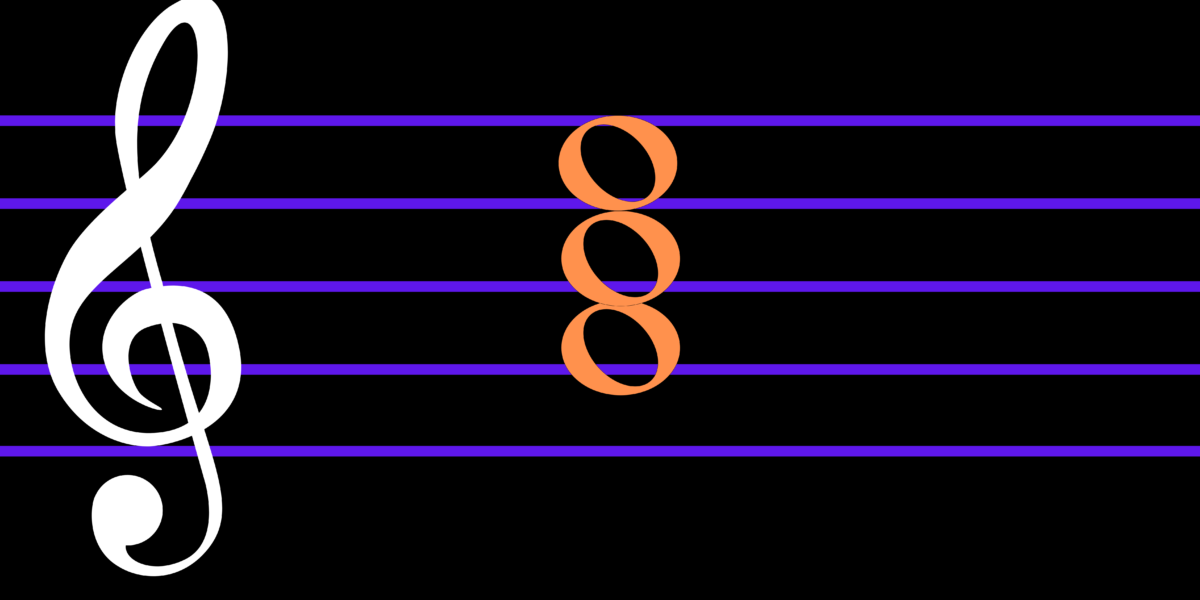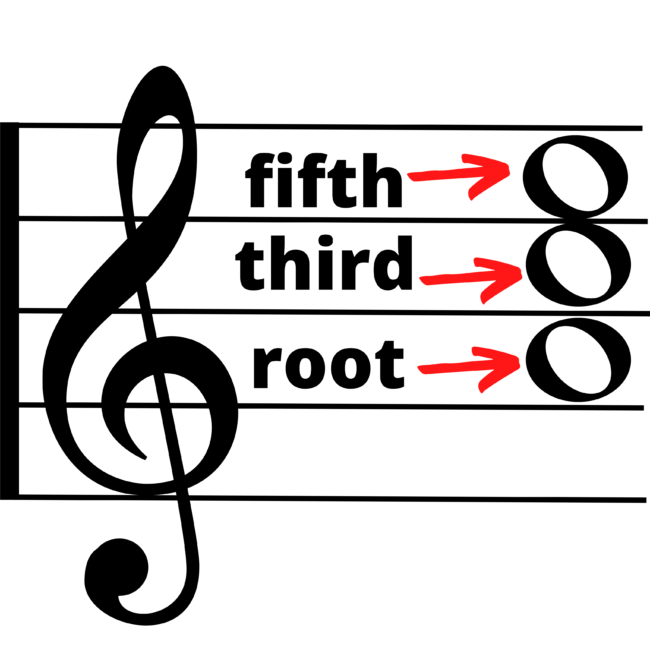How to Play Major and Minor Triads on The Piano

In this blog article, you will learn what triads are, the difference between major and minor triads, and how to play them on the piano.
Merriam-Webster defines a triad as “a union or group of three.” If you go by the dictionary definition of the word, triad sounds pretty simple. You just take three notes and press them down to make a chord, right?
Well, not exactly. There’s a lot more to it.
A triad is a chord made up of three notes. Which notes should you play? How do you play triad in a minor chord? What happens when you invert a triad? Are there different types of triads?
Let’s see what major and minor triads are, what they can do, and how to play a triad at the piano.
What are triads?
A triad is a group of three notes you play together to form a chord. However, not all chords with three notes are triads. For a chord to fall into the “triad” category, the three notes should be based on intervals of thirds.

The most basic major triad uses the root note of the scale, the third tone of the scale, and the fifth tone. Use your first, third, and fifth fingers to play all three notes simultaneously, and you have a triad.
But, other triads branch off in different directions from this basic primary chord. Triads can be major or minor. And augmented and diminished triads leave you somewhere in between!
Why should you learn triads?
Triads can add a rich layer of harmony to consonant pieces. They are one of the most common types of harmony known as harmonic building blocks. Composers often use a simple triad as a base to build more complex harmonies.
By practicing different types of triads on the piano, you can improve your finger accuracy and agility, tune your musical ear, and learn to improvise and harmonize.
Once you learn the triad basics, you can unlock a new level of piano playing.
What are primary triads in piano?
Triads come in many flavors. They can be primary, dominant, or subdominant. Each chord serves a different function and helps to move the listener through a piece. Let’s look at these three triads and find out what they do.

Primary triads
A primary triad (also known as a I tonic chord) is the chord ‘home base’ in a key signature. The name of the key signature is the first note of a I chord. So, for example, if your triad is in the key of C, the primary triad’s root note is C. A primary triad sounds resolved and often starts or ends the harmony line.
Dominant triads
A dominant triad starts on the fifth tone of the key. In the key of C, a dominant chord starts on G and then builds up using thirds to get the chords G, B, and D. The symbol V is used to mean a dominant triad in music. A dominant triad sounds unresolved and is often used to add interest to a piece. It should take the listener on a journey and then return to a primary chord. The blues genre frequently uses dominant chords–especially dominant 7th chords.
Subdominant triads
A subdominant (or IV) chord builds up from the fourth note of the key signature. For example, a subdominant triad in the key of C would be an F, A, C chord. The subdominant triad takes the listener on a journey and resolves to the third tone (or mediant) of the key signature.
The primary and subdominant triads can be either major or minor, depending on the key signature. In a minor key, the subdominant symbol is written in lowercase (iv).
However, dominant triads don’t contain the minor note of the key signature. This means that the dominant triad should be the same for both minor and major keys. For example, in the key of C, a dominant triad is G, B, and D for both.
Those are the three main placements for triad chords in a key signature.
But, wait, that’s just the tip of the iceberg. Let’s take a look at the four types of triads.
The four types of triads
In music theory, triad chords come in four main types. You can have a major triad, minor triad, diminished triad, or augmented triad. Each type of chord has its unique sound. Let’s look at each chord, its sounds, and when to use it in music.
Major triads
A major triad contains a root note, a major third, and the fifth tone in the scale, also known as perfect fifth. Most songs use major triads to fill out the harmony line.
Some composers choose to add extra notes to the basic major triad to create chords with four or five notes in one hand. They also may use broken triads or inverted triads to add some extra pizazz to the harmony line.
Augmented triads
An augmented triad includes a root note and a major third, just like a regular major triad. However, you raise the tone a half step for the fifth tone to create an augmented fifth.
This chord type sounds unfinished and can ask a question or create suspense and tension. Augmented triads aren’t a main course type of chord. Instead, use them sparingly to add emphasis.
You can use augmented chords to transition from major to minor or vice-versa. These triads are used in rock, jazz, and even classical music. Some pieces that include augmented triads are All My Loving by the Beatles, Mozart’s Sonata in A Major, and Rodger and Hammerstein’s Carousel Waltz.
In chord notation, you may see a plus sign (+) or the abbreviation aug used next to the chord name to show that the chord is augmented.
Minor triads
To form a minor triad, play the root note in the scale, lower the third tone by a half step, and play a perfect fifth. This minor chord often sounds dark, intriguing, or sad.
Minor chords are used in a wide variety of songs and genres of music. However, they are usually interspersed with major chords. Get the Party Started by P!nk and Run Through the Jungle by Creedence Clearwater Revival exclusively use minor chords while Turning Tables by Adele and Jolene by Dolly Parton and others intersperse minor triads with other chord types.
A lowercase m next to the chord name in chord notation shows that the triad is minor.
Diminished triads
A diminished triad is similar to a minor triad. It uses the root note of the scale and a minor third. However, in this chord, the fifth tone is lowered (or diminished) by a half step. This chord has an unstable, transitional sound and can increase suspense in a piece. Depending on the piece, it can add dark, foreboding tones or sound playful and jazzy.
Some examples of songs that use diminished triads are Because by the Beatles and Chatanooga Choo Choo by Glenn Miller.
In chord notation, you may see a degree symbol (°) or the abbreviation dim next to the chord name to show that the chord is diminished.
How to play triads on the piano
Playing triads can be a simple way to add harmony to your piece. To build a triad, place your hands in the five-finger hand position. Make sure to observe any sharps and flats in your key signature. If the triad is minor, diminished, or augmented, raise or lower the third and fifth notes appropriately.
Use your first, third, and fifth fingers and press the notes simultaneously. You have just created a solid (or blocked) triad.
This is the most basic triad chord. However, if you want to add interest to a piece, you can use broken and inverted triads. You use the same notes as you would with a blocked triad for these chords. You just arrange them differently.
Inverted triads
With inverted triads, you play the same notes as a triad, just in a different order. You can invert a triad once or twice.
For a first inversion triad, take the chord’s root note and move it up an octave. This leaves the third tone as the bottom note, the fifth as the middle note, and the root note as the highest tone.
To make a second inversion triad, leaving only the perfect fifth in place. Move both the root note and the third up an octave. Now, the perfect fifth is the lowest note of the chord, and the third is the highest tone.
If you invert again, all the notes return to root position–only now, they are an octave higher. Using inverted chords in a harmony line, you can change things up and make each triad unique.
Broken triads
When you play a triad melodically, it’s called a broken triad.
Place your hand in the five-finger position, but instead of playing the notes simultaneously, play each note separately. Allow the tones to overlap by holding down each key until all the notes are played.
Others play a broken triad arpeggio-style. Each note is entirely separate, with no overlap. You can play them in the five-finger position or take the broken chord up and down an octave.
Broken triads can add energy and movement to a piece.
To learn more about chords and theory, check out Learn to Play Piano Chords for Beginners.
Putting major and minor triads into practice.
The music theory surrounding triads can sound complicated at first. However, when you put it into practice on the piano, triads are some of the simplest chords you can play.
As a first-year student, you have probably already played through many different triad types. But armed with some theory, you can wow your friends by explaining what you do at the piano.
Inverting tonic chords and augmenting the fifth note of a triad sounds pretty impressive, right?
If you want to join the cool kids and put music theory into practice at the piano, you can teach yourself at home with the Simply Piano app. This app will help you learn any time, anywhere by walking you through music at the piano step-by-step.









